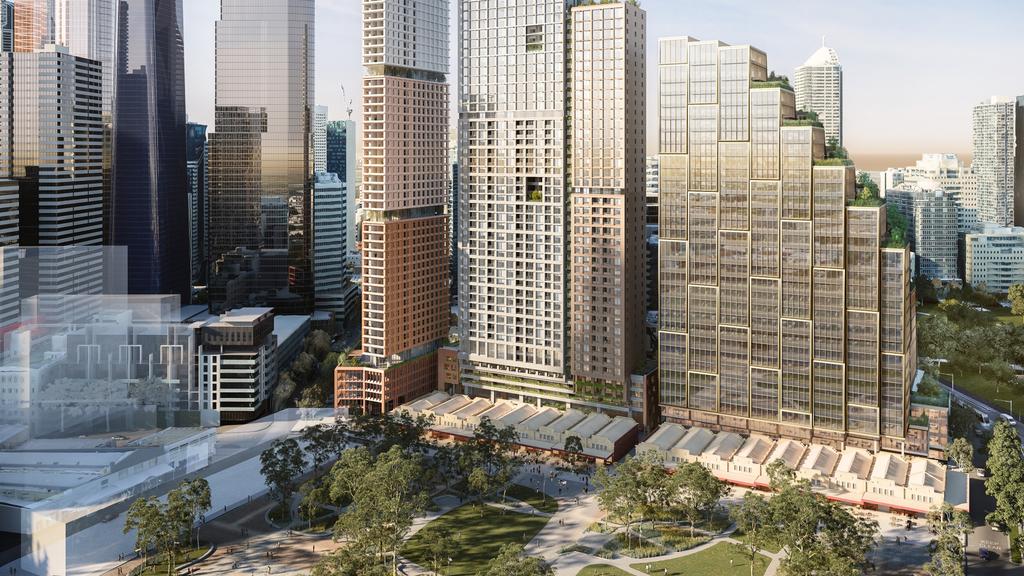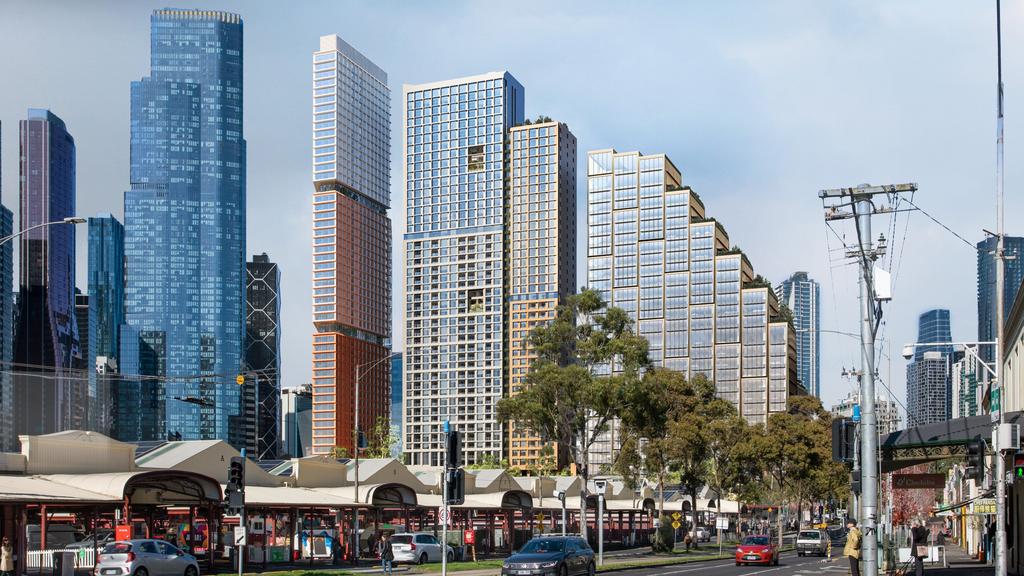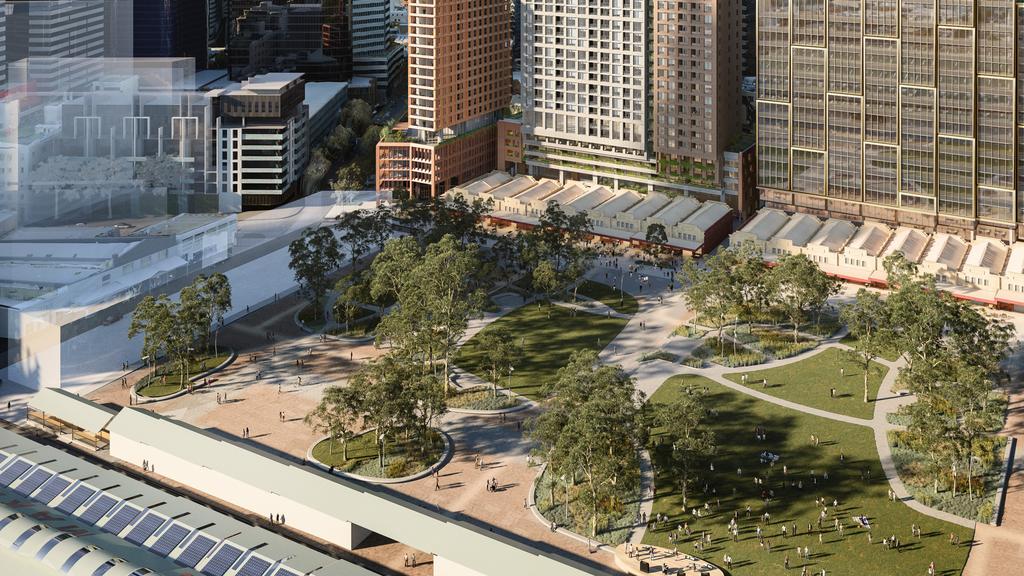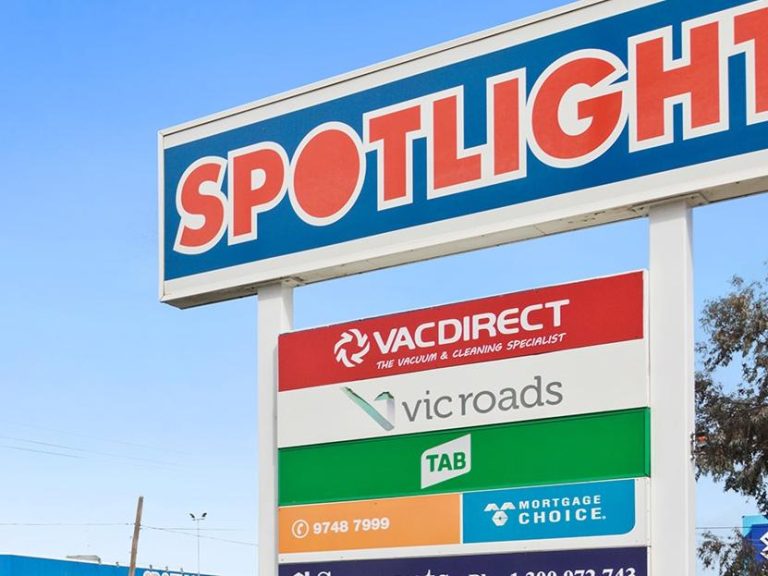Rental crisis: Developers demand policy push

An artist’s impression of the $1.5m Queen Victoria Market redevelopment proposed by Lendlease and the City of Melbourne. Picture: Supplied
The build-to-rent industry is on track for dramatic growth but must surmount significant hurdles as it still faces policy blockages and the capital constraints that have struck the broader real estate.
The industry has been touted as a potential solution to Australia’s housing crisis, but the volume of new projects coming out of the ground has not been quick enough.
Big developers in the area have been hit by rising building costs, higher interest rates and difficulties in locking down capital in order to expand.
Large deals have been struck in recent times, with Japan’s Sumitomo Forestry Co. backing Cedar Pacific in the sector and global giant Hines still in talks for the Arklife platform.
Further hope is coming from the wave of developments winning approvals, with one of the latest being the Novus project in Parramatta, which is backed by British funds house M&G.
The desire of big developers to get into the area has not waned, but actually striking deals has proved difficult and fresh concerns have emerged that planned federal tax relief to stimulate investment does not go far enough.
The Albanese government this week kicked off a review on crucial draft laws to allow eligible BTR managed investment trusts to claim a 15 per cent withholding tax rate.

An artist’s impression of the $1.5m Queen Victoria Market redevelopment proposed by Lendlease and the City of Melbourne.
The eligibility requires 10 per cent of the dwellings to be offered as affordable tenancies at a minimum of 25 per cent discount to the rent charged in similar dwellings within the project.
The Property Council said the technical details of the draft legislation would make or break the delivery of the new homes, and it was concerned that the proposed laws did not go far enough.
“We will be working closely with members to ensure the legislation is workable and does not risk the potential pipeline of 150,000 new homes,” the council said.
Modelling from EY, that it commissioned last year, showed that implementing a 15 per cent managed investment trust withholding rate, without an affordable housing mandate, could lead to the creation of 150,000 apartments by 2033.
But this may not be realised, partly due to the requirements for a mandatory proportion of 10 per cent affordable tenancies, which erodes the level playing field and, if designed poorly, could risk future BTR schemes.
“We are disappointed to see the legislation is not retrospective and excludes all the previously operating projects in Australia,” the council said.
“These projects have pioneered the early development of BTR in Australia and provide a vital foundation of skills and experience that will enable the growth of the sector into the future.
“Failing to extend the measure to existing projects risks these becoming stranded assets. This would be a perverse and inequitable outcome that both wrongly penalises early investors in Australia’s BTR sector and risks removing rental stock from the market if these assets are broken up for sale due to their competitive disadvantage with newer BTR assets.”
The sector is also being distorted by policies that have led to surging immigration, high student numbers and a lack of accommodation. Many students have been forced into BTR style accommodation, both stretching the boundaries of those buildings and creating imbalances.
Scape chief executive Craig Carracher, who runs the largest student accommodation business, says that the differential treatment of the different accommodation types is affecting both market segments with up to 60 per cent of some buildings designated as BTR, in fact occupied by students.
From a development point of view, it is also causing imbalances as state-based measures granted to spur BTR complexes are not granted to student accommodation buildings.“ That’s why we think there needs to be a category for student accommodation in all of the states in their planning regimes,” he said.
“If you’re going to give exemptions to the BTR sector, to create the domestic rental opportunities, it shouldn’t be 60 per cent occupied by students.”

Scape co-founder Craig Carracher at new student accommodation the company developed in Redfern, Sydney. Picture: Jane Dempster
Planning still remains a large roadblock for many new projects. Just 43 per cent of the proposed pipeline of 44,139 units around the country have been given planning approval, as the alternative rental sector is still finding continues to find its footing in the Australian market.
While touted as an alternative to current housing models, the Real Estate Institute of Australia report into the sector released last week found that just 3800 units have been completed nationally. Much of the planned development has been focused on Melbourne (55 per cent), with Brisbane’s proposed pipeline, which represents 27 per cent, now outpacing Sydney (18 per cent).
The nation’s reliance on mum and dad private investors to supply the vast majority of rental stock has contributed to the pressing rental crisis squeezing tenants around the country. Rental vacancy rates registered a slight improvement last month but remained in the doldrums at just 1.11 per cent.
Investor activity is picking up, with younger generations of Australians participating in property investing. Demand for rental accommodation in metropolitan centres is also on the rise – outpacing needs for owner-occupier housing stock – with the number of rented properties rising by a third or more in Melbourne (up 38 per cent), Sydney (up 37 per cent) and Brisbane (up 33 per cent).
REIA president Leanne Pilkington said 150,000 units that the federal budget 2023 had thought outlined would be unlocked by the BTR sector have not eventuated.
“BTR will take time to come online, and our shortages are now,” she said.
“Our market analysis shows very clearly that the current pipeline will not touch the sides of this ambitious supply statement, which is more than 10 per cent of the 1.2 million homes target.
“While projections suggest an expansion of the BTR pipeline in the coming years, it’s evident that private residential investors will continue to dominate the rental market landscape for the foreseeable future,” Ms Pilkington said.
“However, BTR developments are poised to increasingly supplement the private rental sector, offering a promising avenue for addressing housing supply challenges.”

An artist’s impression of the $1.5m Queen Victoria Market redevelopment proposed by Lendlease and the City of Melbourne. Picture: Supplied
While BTR work in tandem with the private market, PropTrack economist Anne Flaherty said the emerging asset class would not be the “silver bullet” for new supply.
“It should be a part of the solution, but it’s not a solution on its own,” she said.
“It’s just like a drop in the ocean of what we need. Over the long term, I think it will be a fantastic thing and could really help, but it’s not going to shift the dial over the next few years.”
While the majority of BTR sites are owned by local private investors and developers (41 per cent), many owners are now being backed by institutional capital. Local and offshore institutions account for a further 40 per cent of the pipeline ownership, but this could dry up unless reforms are made.







